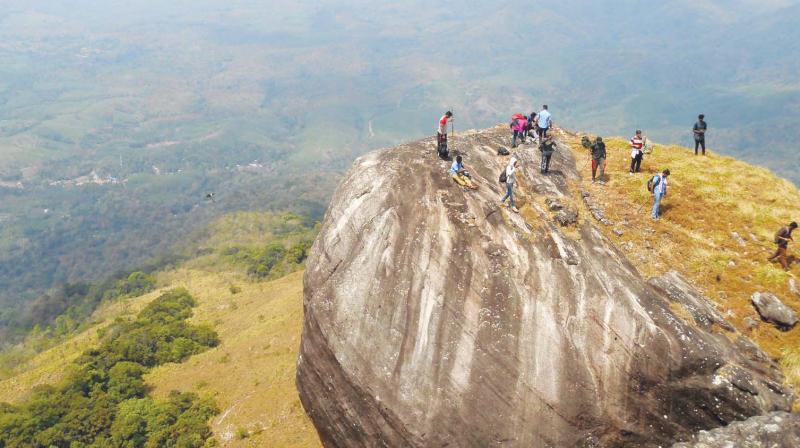A trek to remember

A trek to Varayattumotta isn’t for everyone, but it’s certainly worth it. For an ardent trekker like Rameez E.R., an intent analyst in a Kochi- based IT firm, it was a memorable journey.
“This wasn’t my first trek, but it was one of the most challenging treks for me and my fellow backpackers. The journey to Varayattumotta, the mountain ridge located about 40 km from Trivandrum city, is famous for its peaks that will test even a regular trekker’s endurance. But for those who love to be one with nature and experience the adrenaline rush, this is the perfect spot,” says Rameez.
Regarded as the third toughest trekking spot in South India, behind Anamudi and Agasthyakoodam, Varayattumotta, with a peak height of around 1,100 m is accessible after a trek from Ponmudi check post or from Mankayam check post along the Braemore route. The forest department allows trekking to this location as part of its eco-tourism activities. But you have to get the permission beforehand.
“Steep and shallow trek routes just add to the excitement here. Considering the risk factor of lack of water and food anywhere near the mountain range, we planned well ahead of the trip. Carrying enough water and food, fruits preferably, will help you from dehydration and keep you fit,” says Rameez. People with blood pressure problems and asthma are advised not to try this.
There are two main trek routes to reach Varayattumotta. One is from Mankayam check post on the way to Braemore estate. The second route is from Ponmudi check post. Mankayam and Ponmudi are accessible by car and KSRTC bus. There is one direct bus to Ponmudi starting at 4 am from Thampanoor. This reaches there by 6 am. “We started the walk towards our destination by 7 in the morning and started trekking to the 13-peak mountain range of Varayattumotta. Our group consisted of five trekkers and we were accompanied by a guide. We were only allowed to walk through the trekking path,” he says.
The initial stretch, through a bamboo forest, was a difficult climb. “Just before the start of the first peak, we walked past the remains of a tribal village that was abandoned long ago. As there is a worshipping place, we had to walk barefoot for some time. Climbing immediately after a heavy breakfast isn’t a bright idea. And our guide, who was from a tribe himself, advised us about it. Luckily after the initial climb, the terrain alternated between steep and flat. About an hour into our trek, we came across a herd of elephants on the right side of our trail,” he says.
Out of the 13 peaks, the second trek is the tallest. The third and fourth peaks are the most dangerous as the route is filled with sharp rocks and blade-like grass. The full Varayattumotta mountain ridge is visible only after crossing the second peak.
“We finished the last peak at the golden valley of Kallar by 4 pm. Towards the last two peaks, we had to sledge down on our hands and sometimes even had to slide as it is very deep and steep. We were all very tired and this made climbing down the peaks much more dangerous. A small mistake could mean slipping down to the valley below. Out of a total 10 km stretch, we had to climb 4 km. The total trek distance took us around 9 hours to cover. The highest point we trekked to is at 1,100 m. Towards the end of the trekking, I could see tired faces with joyous smiles as we covered one of the toughest trekking spots around,” he says.
The best time to trek here is between the months of August and September.



